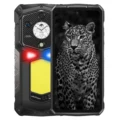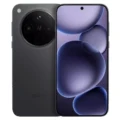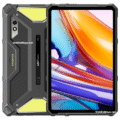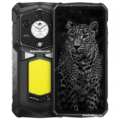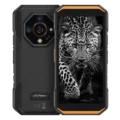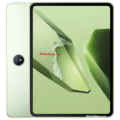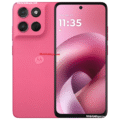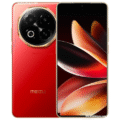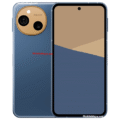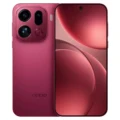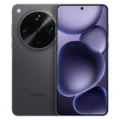Price List: Under Tk.5,000 | Tk.5001-10000 | Tk.10001-15000 | Tk.15001-20000 | Tk.20001-30000 | Tk.30001-40000 | More Mobiles
- Home
- All Mobile
- Ulefone
- Ulefone Armor 24
Ulefone Armor 24
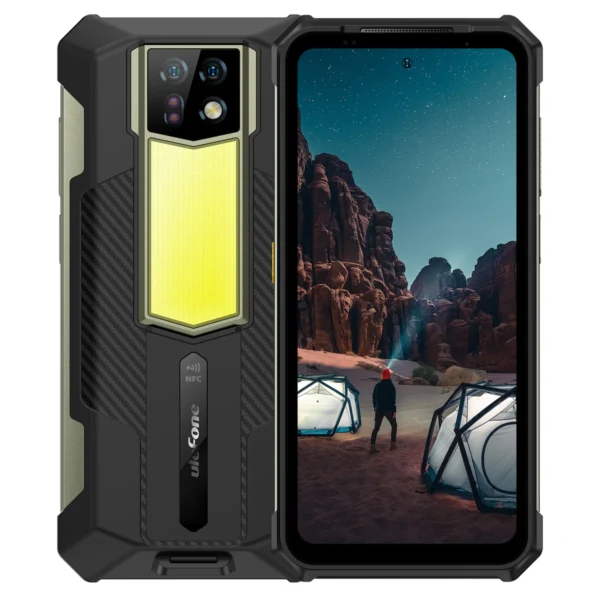


Specifications
Price in Bangladesh
| Expected Price | Coming soon |
General
| Device Type | Smartphone |
| Announced | September, 2025 |
| Released | September, 2025 |
| Status | Available |
Hardware & Software
| Operating System OS => Every computer system run on a base software called Operating System (OS). Operating System controls all basic operations of the computer (such as smartphone, PDAs, tablet computers and other handheld devices). The Operating System allows the user to install and run third party applications (apps), apps are used to add new functionality to the device. | Android |
| OS Version | v13 |
| Chipset Chipset is a group of integrated circuits designed to perform one or a more dedicated functions, often with real time computing constraints, Popular smartphones are equipped with more advanced embedded chipsets that can do many different tasks depending on their programming. | Mediatek Helio G96 (12 nm) |
| CPU CPU (Central Processing Unit) mostly known as processors, CPU processes instructions in order to carry out certain functions that make your device operate properly. Processors are often described as the brain of computers, smartphones and tablets, Smartphones and tablets rely on processors to carry out their every task, Processors are an incredibly important factor in selecting any type of computing device, including your smartphone. | Octa-core (2x2.05 GHz Cortex-A76 & 6x2.0 GHz Cortex-A55) |
| GPU GPU (Graphics Processing Unit) is a single-chip processor designed to rapidly manipulate and alter memory to accelerate the creation of images in a frame buffer intended for output to a display, This includes things such as lighting effects, object transformations, and 3D motion. | Mali-G57 MC2 |
| RAM (Memory) RAM (Random Access Memory) is a type of computer memory that can be accessed randomly, any byte of memory can be accessed without touching the preceding bytes that allows information to be stored and accessed quickly from random locations. RAM is the most common type of memory found in computer systems, smartphones, tablets and other electronic devices. | 12 GB |
Design
| Dimensions | 181.2 x 87 x 27.5 mm (7.13 x 3.43 x 1.08 in) |
| Weight | 647 g (1.43 lb) |
| Colors | Black |
Display
| Display Type Display Technology => A number of display technologies and types used in mobile phones => TFT (Thin Film Transistor), IPS (In-Place Switching), OLED (Organic Light Emitting Diode), AMOLED (Active-Matrix Organic Light-Emitting Diode), Super AMOLED (an even advanced version of AMOLED), Resistive Touchscreen (Resistive touchscreens contain two layer of conductive material with a very small gap between them which acts as a resistance), Capacitive Touchsceen (Capacitive touchscreen technology consists of a layer of glass coated with a transparent conductor) | IPS LCD |
| Size | 6.78 inches, 109.2 cm2 (~69.2% screen-to-body ratio) |
| Resolution | 1080 x 2460 pixels (~396 ppi density) |
| Refresh Rate | 120Hz |
| HDR 10 / HDR+ support |
Rear Camera
| Camera Setup | Dual |
| Main Camera | 64 MP, f/1.9, (wide), 1/1.7", 0.8µm, PDAF |
| Second Camera | 64 MP, f/1.8, (night vision), 2 infrared night vision lights |
| OIS | |
| Video | 1440p@30fps, 1080p@30fps |
Front Camera
| Camera Setup | Single |
| Secondary |
16 MP, f/2.2, (wide), 1.0µm |
| Video | 1080p@30fps |
Battery
| Battery Type Battery Type => Cell phones run on various kinds of batteries depending on the manufacturer, phone size or shape and features. There are basically four types of cell phone batteries => Lithium Polymer, Lithium Ion, Nickel Metal Hydride and Nickel Cadmium. | Li-Ion (Lithium Ion) |
| Placement | Non-removable |
| Capacity Battery Capacity is a measure (typically in Amp-hr) of the charge stored by the battery, and is determined by the mass of active material contained in the battery. The battery capacity represents the maximum amount of energy that can be extracted from the battery under certain conditions. | 22000 mAh |
| Quick Charging | 66W wired |
| Wireless Charging Wireless Charging (Inductive Charging) uses an electromagnetic field to transfer energy between two objects. This is usually done with a charging station. Energy is sent through an inductive coupling to an electrical device, which can then use that energy to charge batteries or run the device. |
10W reverse wired |
Storage
| Storage Capacity | 256 GB |
| USB OTG |
Network
| 2G Network |
GSM 850 / 900 / 1800 / 1900 |
| 3G Network |
HSDPA 850 / 900 / 1700(AWS) / 1900 / 2100 |
| 4G Network |
1, 2, 3, 4, 5, 7, 8, 12, 17, 19, 20, 28, 34, 38, 39, 40, 41, 66 |
| SIM SIM (Subscriber Identity Module) is a small card that contains mobile network subscriber's account information. This allows the phone using the card to attach to a mobile network. The SIM card is most commonly associated with GSM and UMTS mobile networks. Moving a SIM card from one phone to another allows a subscriber to switch mobile phones without having to contact their mobile network carrier. SIM cards can also be used by a phone to store limited amounts of data, such as phone numbers and text messages. | Standard SIM |
Data
| GPRS GPRS (General Packet Radio Service) is a packet oriented mobile data service on the 2G and 3G cellular communication system's global system for mobile communications (GSM), Generally, GPRS is used for the purpose of wireless data transfer, such as sharing pictures and videos or browsing the Internet via a mobile phone connection. | |
| EDGE EDGE (Enhanced Data GSM Environment) is a wireless network technology generally considered the next step in the 2G network offers data transfer rates up to four times faster than ordinary GSM networks, Generally, EDGE is used for the purpose of wireless data transfer, such as sharing pictures and videos or browsing the Internet via a mobile phone connection. | |
| Speed | HSPA, LTE |
| Web Browser Web Browser => a web browser is a software application used to locate, retrieve and display content on the World Wide Web, including Web pages, images, video and other files, The primary function of a web browser is to render HTML, the code used to design or markup webpages. | HTML5 |
Messaging
| SMS SMS (Short Messaging Service) is a text messaging service component of phone, Web, or mobile communication systems. It uses standardized communications protocols to allow mobile phone devices to exchange short text messages over the networks. | Yes |
| MMS MMS (Multimedia Messaging Service) is a standard way to send messages that include multimedia content (audio clips, video clips and images) to and from mobile phones over wireless networks using the WAP protocol. | |
| Email Email (Electronic Mail) is a system for receiving, sending, and storing electronic messages, Similar to a letter, email is text messages that may contain files, images, or other attachments sent via the internet to a recipient by using applications and software prograps. An email address is required to receive email, and that address is unique to the user. | Yes |
| IM IM (Instant Messaging) is an exchange of text messages through a software application, it enable you to create a kind of private chat room with another individual in order to communicate in real time over the Internet. | Yes |
Connectivity
| Bluetooth Bluetooth is a wireless communications technology for exchanging data between mobile phones, headsets, computers and other network devices over short distances without wires, Bluetooth technology was primarily designed to support simple wireless networking of personal consumer devices. | 5.2, A2DP, LE |
| Wi-fi Hotspot | |
| Infrared Infrared connectivity is an old wireless technology used to connect two electronic devices. It uses a beam of infrared light to transmit information and so requires direct line of sight and operates only at close range. | |
| USB | USB Type-C 2.0, OTG |
| GPS GPS The Global Positioning System is a satellite-based radio navigation system, GPS permits users to determine their position, velocity and the time 24 hours a day, in all weather, anywhere in the world, In order to locate your position, your device or GPS receiver must have a clear view of the sky. | GPS, GLONASS, GALILEO, BDS |
| NFC NFC (Near field communication) is a set of standards for smartphones and similar devices to establish peer-to-peer radio communications with each other by touching them together or bringing them into proximity, usually no more than a few inches. |
Media
| FM Radio | Wireless FM radio, RDS, recording |
| Loudspeaker | Yes |
| 3.5mm Jack | Yes |
Sensors & Security
| Fingerprint Sensor |
More
| Made By | China |
Performance Tests
Ulefone Armor 24 Price in Bangladesh
The Ulefone Armor 24 is expected to be priced competitively in Bangladesh, targeting users who want a high-performance rugged smartphone with substantial storage and battery life. This model comes with a generous 12 GB RAM and a large 256 GB internal storage, making it suitable for power users who require ample space for apps, media, and files.
Launched in September 2025, the Ulefone Armor 24 stands out as a robust mid-range device. It combines a durable design with a sizable 6.78-inch 120Hz IPS LCD display, a powerful Helio G96 processor, and a massive 22,000 mAh battery that is truly exceptional in capacity. Equipped with dual 64MP rear cameras, the Armor 24 aims to satisfy photography enthusiasts while maintaining rugged durability, making it an excellent choice for outdoor adventurers or anyone who needs a tough, reliable smartphone.
Ulefone Armor 24 Specifications
Display and Design
The Ulefone Armor 24 boasts a 6.78-inch IPS LCD panel with a sharp Full HD+ resolution of 1080 x 2460 pixels, delivering crisp visuals at approximately 396 pixels per inch. The display supports a smooth 120Hz refresh rate, enhancing responsiveness and making scrolling or gaming visually fluid. Additionally, HDR10 and HDR+ support elevate media viewing by improving color accuracy and dynamic range.
Design-wise, the Armor 24 emphasizes durability with a rugged construction, measuring 181.2 x 87 x 27.5 mm and weighing a hefty 647 grams. Its solid black finish projects a bold and sturdy look, well-suited for tough environments. The phone’s size and weight reflect its reinforced body, designed to withstand shocks and rough handling without compromising on screen size.
Performance and Processor
Powering the Ulefone Armor 24 is the MediaTek Helio G96 chipset, built on a 12nm process. It features an octa-core CPU configuration, with two high-performance Cortex-A76 cores clocked at 2.05 GHz and six energy-efficient Cortex-A55 cores at 2.0 GHz. For graphics, the Mali-G57 MC2 GPU delivers competent visuals, suitable for mid-range gaming and graphic-intensive apps.
With 12 GB of RAM, multitasking runs smoothly, and the phone can handle demanding applications and multiple browser tabs without noticeable slowdowns. The 256 GB internal storage offers ample space and supports USB OTG for external device connections, though it’s not explicitly mentioned if expandable memory via microSD is available. Overall, this setup ensures a solid user experience for gaming, streaming, and everyday tasks.
Camera and Video
The Ulefone Armor 24 features a dual rear camera setup comprising two 64MP sensors, which is quite unique as many phones pair a primary camera with a different secondary sensor. This configuration aims to enhance photography versatility, potentially allowing for better depth perception or advanced imaging modes.
The primary rear cameras support video recording at up to 1440p at 30fps and Full HD 1080p at 30fps, capturing detailed and vibrant footage. On the front, a 16MP wide-angle camera with an f/2.2 aperture is designed for sharp selfies and video calls, also capable of 1080p video recording. While specific features like night mode or AI enhancements are not detailed, the hardware suggests good low-light and general photography capabilities.
Battery and Charging
One of the most remarkable features of the Ulefone Armor 24 is its colossal 22,000 mAh non-removable lithium-ion battery, which far exceeds typical smartphone capacities. This ultra-large battery promises extended usage times, ideal for outdoor use, travel, or heavy multitasking without frequent recharging.
Charging is supported via 66W wired fast charging, allowing for quicker power-ups despite the massive battery size. The phone also offers 10W reverse wired charging, meaning it can serve as a power bank to charge other devices. This combination ensures both endurance and convenience, with efficient power management likely due to the Helio G96 chipset.
Connectivity and 5G Support
The Ulefone Armor 24 supports a comprehensive range of network bands, including 2G, 3G, and 4G LTE frequencies, ensuring wide compatibility globally. However, it does not support 5G connectivity, positioning it clearly in the mid-range category without next-gen network features.
Connectivity extras include Bluetooth 5.2 with A2DP and LE support, Wi-Fi hotspot capabilities, infrared, and USB Type-C 2.0 with OTG functionality. GPS support is extensive, covering GPS, GLONASS, GALILEO, and BDS for accurate location tracking. NFC is also included, enhancing mobile payments and wireless data transfers.
Additional Features
Security and convenience come with a built-in fingerprint sensor for fast and reliable biometric unlocking. The phone runs on Android 13, offering the latest software improvements and features out of the box, likely with a near-stock or lightly customized interface.
Other practical features include an FM radio with wireless capabilities and recording, stereo loudspeakers, and a 3.5mm headphone jack, which many users still appreciate. The device is manufactured in China, maintaining a rugged build suited for demanding users.
Reason to Buy
- Massive Battery Life: The extraordinary 22,000 mAh battery ensures days of usage, perfect for outdoor enthusiasts or heavy users.
- Rugged Design: Built to withstand tough conditions, ideal for construction workers, adventurers, or those needing a durable phone.
- Smooth 120Hz Display: Offers a great viewing experience with sharp, fluid visuals.
- High RAM and Storage: 12 GB RAM and 256 GB storage cater to power users and multitaskers.
- Dual 64MP Cameras: High-resolution cameras offer excellent photo quality and versatility.
- Fast Charging & Reverse Charging: Quick 66W charging and the ability to charge other devices add convenience.
Verdict
The Ulefone Armor 24 is a compelling mid-range rugged smartphone that excels in battery capacity, durability, and performance. Its massive battery life and strong build make it particularly suitable for users who need a reliable device in harsh environments or during extended travel. While it doesn’t support 5G, its 4G connectivity remains comprehensive and fast for most users.
With its dual 64MP cameras, smooth 120Hz display, and robust Helio G96 chipset, the Armor 24 balances power and endurance effectively. It is a smart choice for professionals working outdoors, adventure seekers, or anyone prioritizing battery life and toughness over cutting-edge connectivity.
FAQ
Q: When will the Ulefone Armor 24 be available in Bangladesh?
A: The phone was announced for September 2025 and should be available around that time or shortly after.
Q: Does the Ulefone Armor 24 support 5G networks?
A: No, this model supports 2G, 3G, and 4G LTE networks but does not have 5G capability.
Q: How long does the battery last on a single charge?
A: Thanks to the massive 22,000 mAh battery, users can expect multiple days of usage depending on activity, making it one of the longest-lasting phones available.
Q: Can I expand the storage with a microSD card?
A: The specifications do not mention expandable storage, so it’s likely the 256 GB internal memory is fixed.
Q: Is the Ulefone Armor 24 suitable for gaming?
A: Yes, the Helio G96 chipset combined with 12 GB RAM and a 120Hz display provides smooth performance for most mid-range gaming needs.
Q: Does it have water and dust resistance?
A: While rugged by design, specific IP ratings are not listed. Check with the retailer or official sources for exact durability certifications.
User Reviews
Disclaimer Note
We do not guarantee that the information of this page is 100% accurate and up to date.



